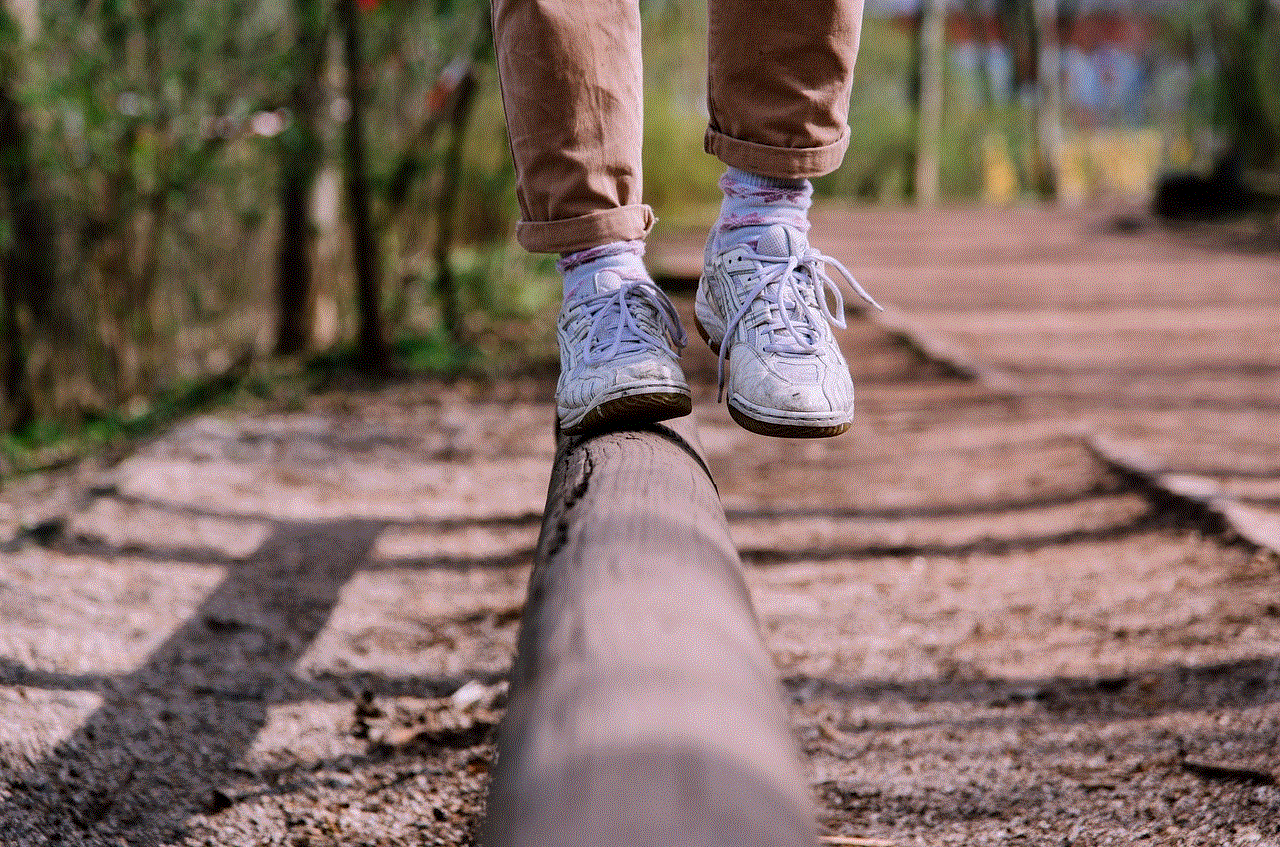hookup for teens
Introduction
Hookup culture has become increasingly prevalent among teenagers in recent years. With the rise of dating apps and social media, it has never been easier for teens to connect with one another for casual sexual encounters. While some may argue that hookup culture empowers teens to explore their sexuality, others believe it can have negative consequences on their physical and emotional well-being. In this article, we will delve deeper into the world of hookup culture among teens and explore its impact on their lives.
What is hookup culture?
Hookup culture can be defined as a culture that accepts and encourages casual sexual encounters without any commitment or emotional attachment. It is often associated with college campuses, but it has also become increasingly prevalent among teenagers. The rise of dating apps such as Tinder and Bumble has made it easier for teens to find potential partners for casual hookups.
The rise of hookup culture among teens
The rise of hookup culture among teens can be attributed to various factors. One of the main reasons is the increased access to technology and social media. With the use of dating apps, teens can easily find and connect with potential partners, making it easier to engage in casual sexual encounters.
Moreover, the portrayal of sex in popular culture, such as movies and TV shows, has also contributed to the normalization of hookup culture among teens. The constant exposure to sexual content can desensitize teens and make them more open to casual sexual encounters.
Pros of hookup culture for teens
Supporters of hookup culture argue that it can have positive effects on teenagers. For some, it can be a way to explore their sexuality without any societal pressures or expectations. It allows them to experiment and learn about their sexual preferences and boundaries.
Hookup culture can also provide a sense of freedom and independence for teens. It allows them to make their own choices without the fear of judgment or stigma. It can also be a way for them to build confidence and self-esteem as they navigate their way through their teenage years.
Cons of hookup culture for teens
However, hookup culture also has its downsides, especially for teenagers. One of the main concerns is the lack of emotional attachment and commitment in these encounters. It can lead to feelings of emptiness and loneliness, especially for those who are seeking a meaningful connection.
Moreover, hookup culture can also expose teens to various risks, both physical and emotional. With the increase in the number of sexual partners, there is a higher chance of contracting sexually transmitted infections (STIs). It can also lead to emotional distress, such as feelings of guilt, regret, and anxiety.
Impact on physical and emotional well-being
The impact of hookup culture on the physical and emotional well-being of teens is a topic of ongoing debate. On one hand, supporters argue that it allows teens to explore their sexuality safely and can have positive effects on their self-esteem. On the other hand, critics argue that it can lead to negative consequences, such as the risks of STIs and emotional distress.
Studies have shown that teens who engage in hookup culture are more likely to report feelings of depression and anxiety compared to those who are in committed relationships. Moreover, there is a higher risk of sexual assault and non-consensual sex in hookup culture, especially when alcohol or drugs are involved.
Impact on relationships
Another concern about hookup culture among teens is its impact on their ability to form and maintain healthy relationships in the future. With the emphasis on casual and non-committal encounters, teens may develop a skewed view of relationships and intimacy. It can make it challenging for them to establish meaningful connections and may lead to difficulties in forming long-term relationships.
Moreover, the constant search for the next hookup may make it difficult for teenagers to focus on other aspects of their lives, such as their education or personal development. It can also lead to a lack of emotional intimacy and trust in future relationships.
Parental role and responsibility
As hookup culture continues to be prevalent among teens, it is essential for parents to play an active role in educating their children about healthy relationships and responsible sexual behavior. Parents should have open and honest conversations with their teenagers about the risks and consequences of hookup culture.
Furthermore, parents should also educate their children about consent and the importance of communication in any sexual encounter. By providing a safe and supportive environment, parents can help their teens navigate the complexities of hookup culture and make informed decisions.
Conclusion
In conclusion, hookup culture has become increasingly prevalent among teenagers, thanks to the advancements in technology and the normalization of casual sex in popular culture. While it can have some positive effects, such as allowing teens to explore their sexuality, it also has its downsides, such as the risks of STIs and emotional distress. It is essential for parents to play an active role in educating their children about healthy relationships and responsible sexual behavior to help them navigate the complexities of hookup culture.
dark memes about death
Death is a subject that has fascinated humanity since the beginning of time. It is an inevitable part of life that has been the source of many philosophical, religious, and cultural discussions. However, in recent years, death has also become a popular topic for dark humor, especially in the form of memes. These dark memes about death have gained a significant following on the internet, with people using them to cope with the fear and uncertainty surrounding the concept of death. In this article, we will explore the world of dark memes about death, their origins, and their impact on society.
Before we delve into the world of dark memes about death, it is essential to understand what a meme is. A meme is a piece of content, typically an image, video, or phrase, that is spread rapidly through social media platforms and the internet. Memes often convey a particular idea or emotion, and they are usually humorous in nature. The term “meme” was first coined by the British biologist Richard Dawkins in his book “The Selfish Gene” in 1976, where he defined it as “a unit of cultural transmission.” Today, memes have evolved into a complex and diverse form of communication, and they are an integral part of internet culture.
The origin of dark memes about death can be traced back to the early days of the internet in the late 1990s and early 2000s. At this time, the internet was still in its infancy, and people were exploring new ways to express their thoughts and ideas. This led to the creation of forums and chat rooms where people could share their dark and morbid humor without judgment. One of the earliest examples of dark memes about death is the “All Your Base Are Belong To Us” meme, which originated from a poorly translated line from a Japanese video game. This meme became popular in the early 2000s and featured a picture of a spaceship with the caption “All Your Base Are Belong To Us.” This meme was a dark and humorous take on the concept of death and became a viral sensation at the time.



As the internet continued to grow, so did the popularity of dark memes about death. In the mid-2000s, the infamous “YOLO” meme became popular, which stood for “You Only Live Once.” This meme was often used as a justification for engaging in risky or dangerous activities, and it became synonymous with the idea of living life to the fullest. However, as the meme gained popularity, it also started to take on a darker meaning, with people using it to mock those who had passed away. This shift in the meaning of the meme sparked a debate about the ethics of using death as a source of humor.
In the late 2000s and early 2010s, the internet saw an explosion in the popularity of dark memes about death. This was largely due to the rise of social media platforms like facebook -parental-controls-guide”>Facebook , Twitter, and Instagram , which made it easier for people to create and share memes. One of the most popular dark memes about death during this time was the “Forever Alone” meme, which featured a stick figure with a sad expression and the caption “forever alone.” This meme was often used to express feelings of loneliness and isolation, but it also took on a darker meaning when people started using it to make jokes about death and dying alone.
In recent years, dark memes about death have become more prevalent than ever before. With the rise of meme culture and the increasing popularity of social media, these memes have become a way for people to cope with the fear and uncertainty surrounding death. In particular, the COVID-19 pandemic has seen a surge in the creation and sharing of dark memes about death. These memes often make light of the current situation and provide a sense of relief from the constant news of death and tragedy.
One of the most popular dark memes about death during the pandemic is the “My Plans vs. 2020” meme. This meme features two images, with the first one showing someone’s plans for the year, and the second one showing how 2020 has actually turned out. This meme has been widely used to express the disappointment and frustration of people whose plans have been derailed by the pandemic. It has also been used to make jokes about death, with the second image often showing a grim reaper or a person in a hazmat suit.
Another popular dark meme about death that emerged during the pandemic is the “I Survived the Toilet Paper Shortage of 2020” meme. This meme pokes fun at the panic-buying of toilet paper that occurred at the beginning of the pandemic and has been used to make light of the situation. However, this meme has also been criticized for being insensitive to those who have lost their lives due to the virus.
While dark memes about death may seem harmless on the surface, they have sparked debates about the ethics of using death as a source of humor. Some argue that these memes are a way for people to cope with the fear and uncertainty surrounding death, while others believe that they trivialize a serious and sensitive topic. Additionally, some people argue that these memes can be triggering for those who have experienced loss and can be seen as insensitive.
In conclusion, dark memes about death have become a popular form of humor on the internet, particularly in recent years. These memes have evolved from simple images with captions to complex and diverse forms of communication. While they may provide a way for people to cope with the fear and uncertainty surrounding death, they have also sparked debates about the ethics of using death as a source of humor. As the world of memes continues to evolve, it will be interesting to see how dark memes about death will continue to shape our understanding and perception of death in the digital age.
why cant i see someones location on iphone
Location tracking has become a common feature on smartphones, allowing users to easily find and share their location with friends and family. However, there are times when you may not be able to see someone’s location on your iPhone, leaving you wondering why. In this article, we will delve into the reasons why you may not be able to see someone’s location on your iPhone and how you can troubleshoot this issue.
Before we dive into the reasons, it is important to understand how location sharing works on iPhones. Apple’s location sharing feature, known as “Find My,” allows users to share their location with selected contacts or in a group. The location is shared via the Messages app, allowing you to see the person’s real-time location on a map. This feature is useful for coordinating meetups, keeping track of family members, or in case of emergencies.
Now, let’s explore the possible reasons why you may not be able to see someone’s location on your iPhone.
1. Location Services Are Disabled
The most common reason why you are unable to see someone’s location is that their location services are turned off. Location services can be turned off for individual apps or for the entire device. If the person you are trying to locate has turned off location services for the Find My app, you will not be able to see their location. To check if location services are enabled, go to Settings > Privacy > Location Services and make sure it is turned on.



2. Location Sharing Is Turned Off
Even if location services are turned on, the person you are trying to locate may have turned off location sharing for the Find My app. To check this, open the Find My app and tap on the “People” tab. If the person’s name does not appear, it means that they have disabled location sharing for you. They will need to go to Settings > [their name] > Find My > Share My Location and ensure that the toggle is turned on for your contact.
3. The Person Has Disabled Location-Based Alerts
Another reason why you may not be able to see someone’s location is that they have disabled location-based alerts. These alerts use location services to notify you when someone arrives at or leaves a specific location. If the person you are trying to locate has turned off these alerts, you will not be notified of their location updates. They can check this by going to Settings > Privacy > Location Services > System Services > Significant Locations and making sure the toggle is turned on.
4. The Person Has Disabled Background App Refresh
Background App Refresh allows apps to refresh their content in the background, ensuring that you have the latest information when you open them. If the person you are trying to locate has turned off Background App Refresh for the Find My app, you will not receive their location updates in real-time. To check this, go to Settings > General > Background App Refresh and make sure it is turned on for the Find My app.
5. Poor Internet Connection
For location sharing to work, both parties need to have a stable internet connection. If the person you are trying to locate has a poor internet connection, their location updates may not be sent to you in real-time. This can happen if they are in an area with weak cellular or Wi-Fi signal or if they have turned off their data connection. In this case, you may only see their last known location on the map.
6. The Person Is Out of Range
The Find My app uses a combination of cellular, Wi-Fi, and Bluetooth signals to determine a person’s location. If the person you are trying to locate is out of range of any of these signals, their location updates may not be sent to you. This can happen if they are in a remote area with no cellular coverage or if they have turned off Wi-Fi and Bluetooth on their device.
7. The Person Is Using a Non-iOS Device
The Find My app is only available on iOS devices, which means that you will not be able to see the location of someone who is using an Android device or a non-Apple phone. In this case, you can use third-party location sharing apps that are compatible with both iOS and Android devices.
8. The Person Has Logged out of iCloud
If the person you are trying to locate has logged out of their iCloud account, their location updates will not be sent to you. This can happen if they have signed out of iCloud on their device or if they have changed their iCloud password. In this case, they will need to log back into their iCloud account for location sharing to resume.
9. The Person’s Device Is Turned Off
If the person’s device is turned off, their location will not be updated on the map. In this case, you will only see their last known location before their device was turned off. This can happen if their device runs out of battery or if they have manually turned off their device.



10. The Person Has Disabled Location Services for the Find My App
Lastly, the person you are trying to locate may have disabled location services for the Find My app altogether. This means that their location will not be shared with anyone, and you will not be able to see their location on your map. They can check this by going to Settings > Privacy > Location Services and making sure the toggle is turned on for the Find My app.
In conclusion, there can be various reasons why you may not be able to see someone’s location on your iPhone. It is important to check if location services are enabled, location sharing is turned on, and the person has a stable internet connection. If all of these factors are in place, and you still cannot see their location, it could be due to their device being out of range or turned off. By understanding these reasons, you can troubleshoot the issue and ensure that you are able to see someone’s location when needed.